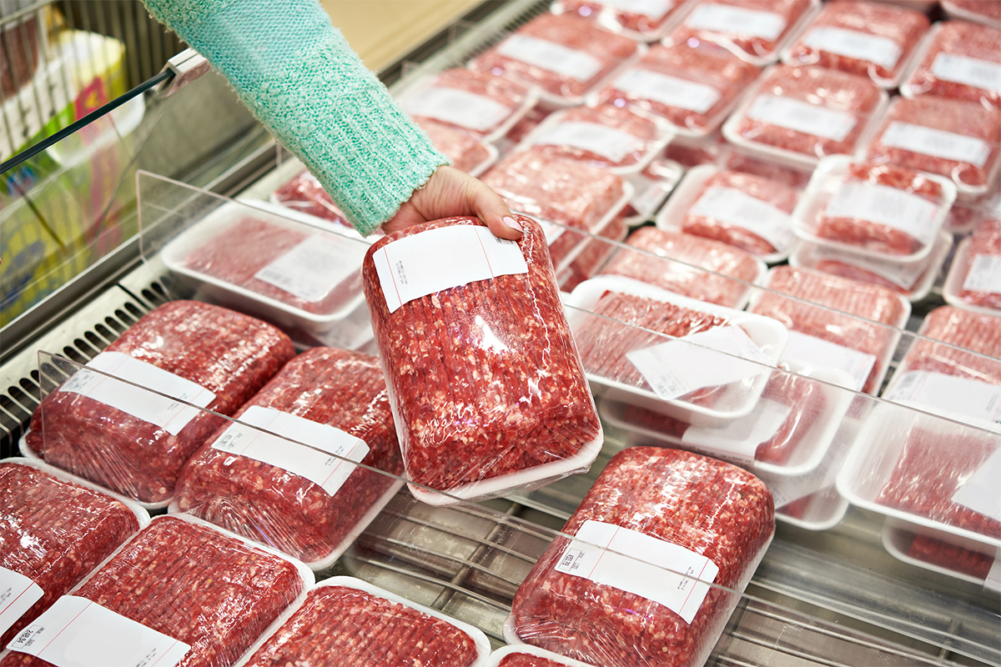Retailers are having to rethink their food strategy. With a growing number of customers switching up their normal shopping patterns to adapt to the collective economic pressures, shoppers are particularly attuned to affordable options and the occasional grocery store splurge.
Anne-Marie Roerink, principal at San Antonio-based 210 Analytics, noted that 93% of consumers are applying one or more money-saving techniques when grocery shopping. That percentage is up from about 50% of consumers in fall 2022 according to the latest Power of Meat study, which was researched by Roerink.
On the flip side, as consumers are looking to save money by eating at home, retailers reap the added patronage. According to Roerink, 39% of consumers are pulling back from restaurant and other foodservice spending.
“Life has turned into continuums, from affordable to splurging a little, from time-well-spent to time-well-saved, from ultra healthy to ultra indulgent, from nostalgia to new,” Roerink said. “That means life is ever more a balancing act between money, time, health and taste.”
To capture the attention of consumers in this volatile time, retailers are diversifying their approach.
“While affordability is the undercurrent to all decisions, there are still lots of reasons to splurge a little — whether that is a special occasion or holiday, a brand people love, doing something nice for themselves or others, something that’s a little more healthful, saves time, was ethically produced, etc.,” Roerink said. “In other words, occasion-based marketing and storytelling are more important than ever before.”
Consumers are finding their rhythm, figuring out their must-have items. Roerink said volume and unit pressure has stabilized across all categories.
Seeking versatility
Recessionary patterns are becoming more evident as the number of items per trip continues to decrease and consumers are opting for more cost-effective, versatile products. Interest in whole muscle cuts is shifting to ground meat and chicken.
Coming as no surprise to the industry, ground beef took the lead across all types of grinds, yielding a sales value of $12 billion, according to data from Circana for the fiscal year ending April 30. Ground turkey is the second-largest sector in the category with $1.7 billion in sales. Chicken may have to make up some ground to match the market span of turkey, but it was the fastest growing sector this past year. Ground chicken’s volume jumped by nearly 10% from last year to 56 million lbs, and its value increased by about 15% to $260.9 million. Following closely behind chicken is pork, with a sales value of $205.4 million and volume of 48 million lbs.
“Grinds were big business to begin with, given their cost-effectiveness, versatility and cooking confidence barrier,” Roerink said. “The popularity of grinds has intensified in the past year as affordability is taking on a bigger role. In addition to a favorable price per pound, shoppers can easily purchase grinds in larger quantities to freeze and use over time.”
Roerink added that freezing has become essential to food waste strategies, benefiting the industry financially while supporting environmental sustainability. She recommended the industry invest in bulk packs of grinds that are pre-portioned into 1-lb vacuum-sealed packages for consumer ease. Through bulk pre-sealed packages, consumers can take advantage of sales without concern of freezer burn and waste.
Speaking the language of their customers, retailers are bringing back previously used primal references like “ribeye burgers” or “brisket burgers,” offered in pre-formed patties.
“Shoppers may not be in the market for a ribeye steak, but they may be able to purchase ribeye burgers,” Roerink said.
Products are also being innovated to meet the needs of beef-craving consumers on a budget with the introduction of blended beef and pork grinds.
More companies are experimenting with pre-seasoned grinds and patties in different flavors.
“I’m increasingly seeing seasoned ground chicken and turkey as well as a wide variety of burgers,” Roerink said. “This too is an important way to address the current marketplace. Many consumers want to eat at restaurants less to save and are hoping to recreate some of these meals at home.
“For instance, one of the shoppers I interviewed noted that her family likes pub/bar food, things like chicken wings and burgers and finds herself walking through the store trying to recreate what they would have picked off a menu if they were eating out.
"Referring to pre-made premium burger patties as 'pub burgers,' for instance, can help connect the dots in those instances.”



